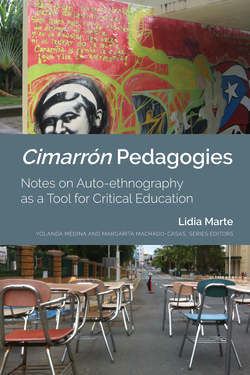Читать книгу Cimarrón Pedagogies - Lidia Marte - Страница 20
На сайте Литреса книга снята с продажи.
Framings, Scope and Limitations
ОглавлениеEthnography has been considered a marker of anthropology since the early institutionalization of the discipline in the 19th century in the US. Yet, this is specifically a methodology used by socio-cultural anthropology, a sub-field of anthropology. Anthropology is a social science that proposes to holistically study human diversity and the human experience past and present, from diverse dimensions, mainly through four sub-fields: archeology (the long pre-historic past) which focuses on the societies, landscapes and artifact traces left by human groups; physical or biological anthropology, focuses on the evolutionary and physiological aspects of human species and primates; linguistic anthropology, focuses on communication, language and representational practices. Socio-cultural anthropology (my area of ←11 | 12→training), in its most basic form, aims to research and understand the diverse social processes and cultural practices of living human groups in their diversity, and the experience of being human in our times, with all its complexities. It is important to clarify that cultural anthropology is the term used in the US academic tradition, and social anthropology refers to the European (in particular UK) academic tradition. In this book I use the term socio-cultural anthropology as used in Puerto Rico and in some Latin American countries. Yet I want to clarify that my discussion does not engage anthropology as practiced in Latin America, Africa, Asia and other regions. My focus for the debates and publications discussed below come from the US tradition, for which the concept of “culture” is privileged as a useful distinction. This is the current in which I was trained and is what shapes and informs my anthropological practice.
The purpose of this chapter is to explain what Ethnography is, its emergence and moments of transformations within and outside of anthropology, classical and more recent ways of practicing it, the implications it has as an academic tool for our present times, and its central role in the development of auto-ethnographic methodologies. The intention of this chapter is to offer a wider vision of ethnography, with a narrow focus on particular aspects that are relevant to understand the subsequent discussion of auto-ethnography in Chapter Two. The academic resources discussed are meant to support the more experiential contents of the other chapters, by discussing the potential and limitations of ethnographic tools for academic research and for informing teaching practices. This is not a literature review, a history of ethnography, nor a genealogy of the main debates. Many other perspectives can be found in the literature by scholars with the expertise in this topic (I highly suggest Michael Agar’s works—in particular 1996—for an accessible in-depth overview of ethnography). My suggestion is to use this, and Chapter Two, as references to clarify doubts about ethnography and auto-ethnography, especially when reading Chapter Three. I hope that these resources are also useful for readers who wish to explore these topics in more depth (hence, I have included in the references, works not discussed, for readers who want to explore issues that I don’t address fully here).
The views of ethnography that I am offering respond to my situated interpretations, according to my own academic formation and to the particularities of my vision and experiences. My discussion begins with definitions and explanations of what ethnographers do during fieldwork. I discuss then moments of transformation and critiques of the ethnographic practices. I conclude with a genealogy of sorts, of currents and scholars that were important to me during my graduate training and later through my research (indirect mentors); hence, this chapter is filtered through a first person auto-ethnographic voice, which honors the main proposal of this book.
←12 | 13→
